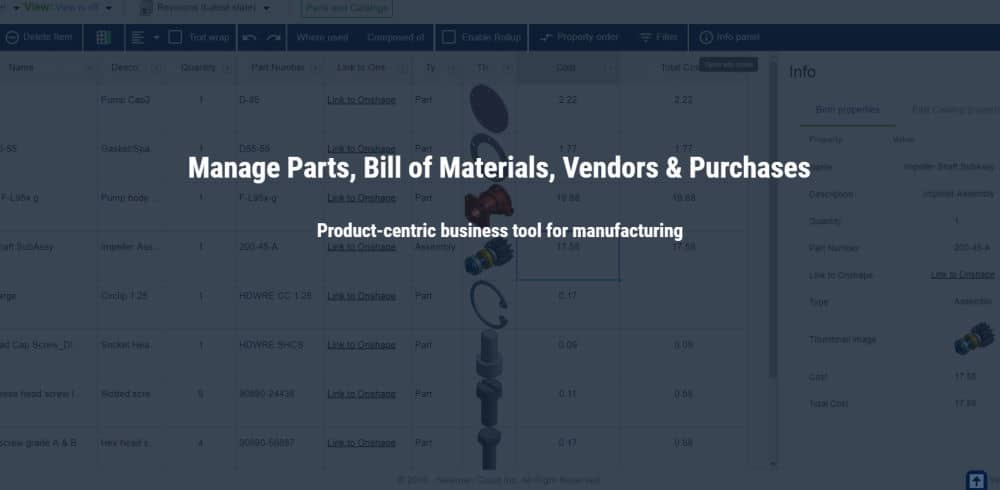Simply put, the bill of materials refers to a document that supply chain professionals use to manage product development. More broadly, the term refers to the constant work and upkeep that is required to maintain effective bills of materials at a large enterprise level. BOM systems are used by any company that manufactures a product, whether it’s an engineering, manufacturing, or software product.
The “bill” itself is a foundational document that includes all the individual parts and sub-assemblies required to make a finished product. It is a blueprint for the finished product that the company delivers to its end consumers or supply chain partners. The definition of what constitutes a finished product depends on the type of company or industry, but the core purpose is usually very similar across all of them.
A bill of materials functions as a method of communication between individuals at the same manufacturing plant, or often it is used to facilitate workflow between manufacturing partners. Depending on the individual business case, a bill of materials can be structured based on a product’s design process (common in engineering), a product manufacturing process, or as a product is ordered and fulfilled, which is typical in sales situations. Bills of materials usually tie back to individual order documentation, like a purchase order or work order, that helps a company keep track of its inventory during the workflow.
The simplest type of BOM is probably an engineering bill of materials, which outlines all the assemblies and sub-assemblies for a type of finished product. In process manufacturing, which centers around a proprietary formula or recipe, the BOM is often referred to as an ingredients list. Pharmaceutical, food, beverage, consumer packaged goods, and biotechnology companies are all examples of process manufacturers.
Bills of materials become more complicated when they’re applied to highly configurable products like software or data management systems, indeed many technology applications. In these instances, and indeed as the global economy is digitizing operations at an increasing pace, companies will use software solutions like OpenBOM to help them manage all the different permutations and customizations that could result from custom-tailored solutions for their customers. This way, a company that manufactures potentially thousands of different SKUs can maintain an orderly inventory count and have visibility into their operations.
As technology continues to shape the way we live, work, interact, and do business, the bill of materials management systems will need to adapt in order to ensure effective business applications across industries. Vast amounts of data generated by large organizations will increasingly demand full-stack integration with hosting and editing infrastructure that helps limit the overhead required from industry professionals to maintain it at scale. Moreover, as the systems we use to design and create manufactured products continue to shift to digital (think a computer-aided design or CAD programs used in design and engineering), BOM systems will need to support integration and automation to support the digital medium of design work today.








